How Taiwan’s expanding semiconductor industry deals with water shortages
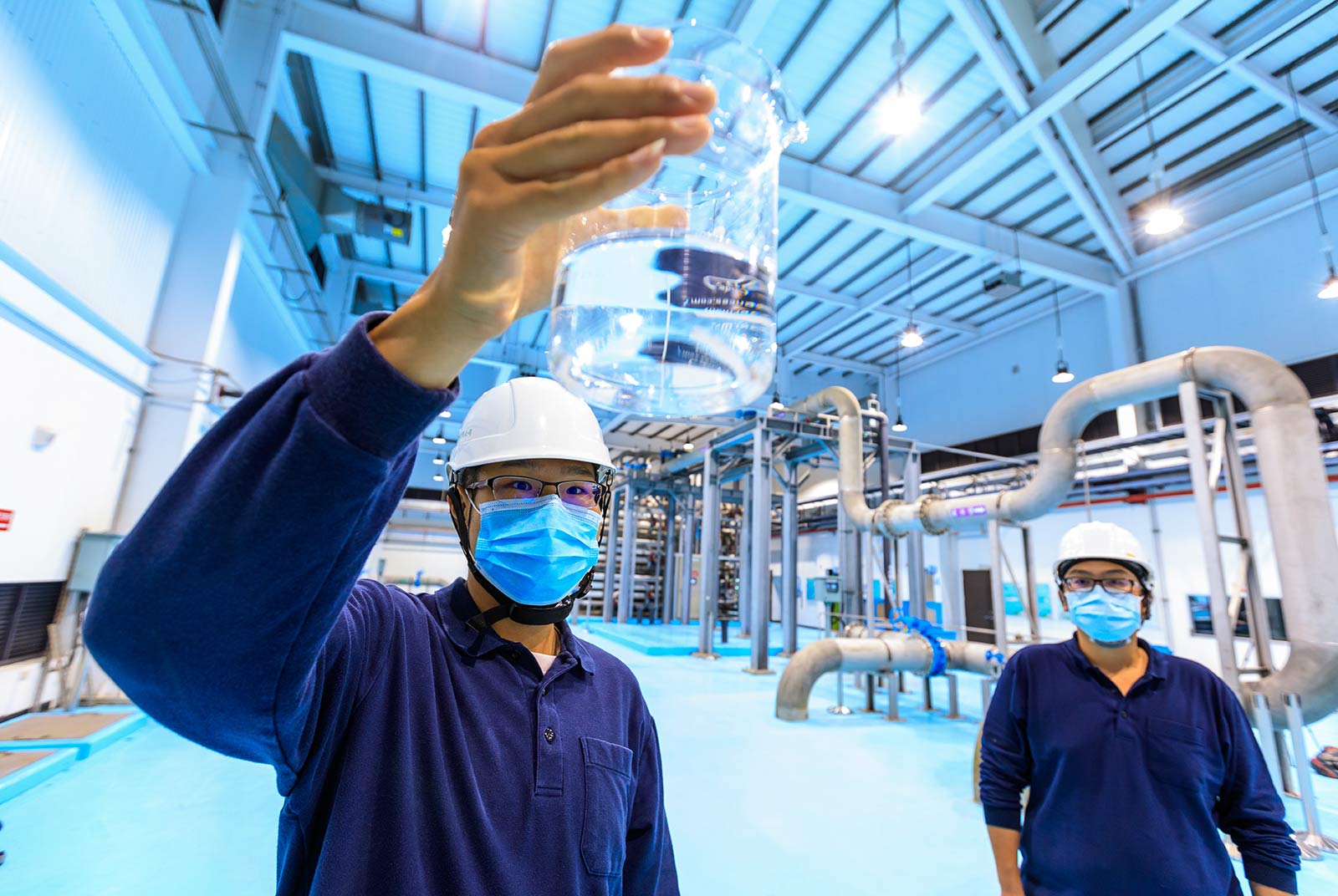
Source:Chien-Ying Chiu
As Taiwan's semiconductor industry expands to cater to rising global chip demand, southern Taiwan will be hardest hit by water shortages. The battle for water has already begun.
Views
How Taiwan’s expanding semiconductor industry deals with water shortages
By Teng Kai-yuanFrom CommonWealth Magazine (vol. 750 )
Early 2021, Taiwan faced a severe drought. Water shortages were especially serious in the central and southern parts of Taiwan.
“Everyone was feeling the squeeze. There was talk of scaling down production. International customers saw news about the drought and asked if their orders would be affected,” says Denis Chen (陳世賢), Vice President at Chimei, which has production plants in Taiwan's southern city of Tainan.
At the same time, a deluge of investments is pouring into these southern cities. In April, the semiconductor giant TSMC’s Kaohsiung chip plant passed its environmental impact assessment. That means it has the green light to go ahead with construction.
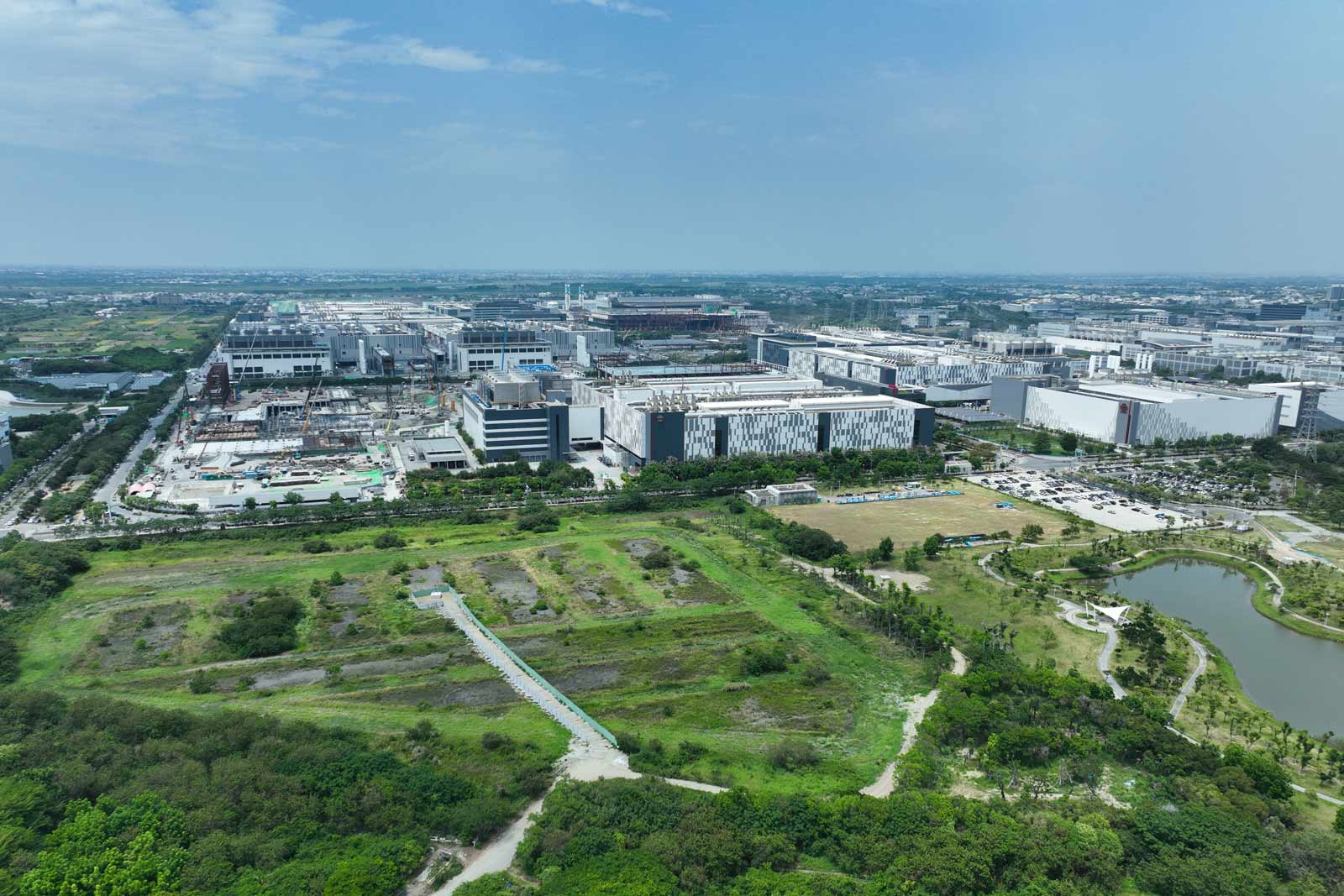 TSMC’s Kaohsiung chip plant (Source: Zi-Yao Yu)
TSMC’s Kaohsiung chip plant (Source: Zi-Yao Yu)
A single new fabrication facility of TSMC's caliber would increase Kaohsiung’s daily water intake by 118,000 metric tons. That is 7% of Kaohsiung’s overall water consumption.
The Southern Taiwan Science Park also uses more and more water. Currently, it consumes 200,000 metric tons of Tainan’s water supply. In another decade, its water usage is expected to grow by 50%, reaching 335,000 metric tons daily.
Taiwan’s Water Resources Agency has warned that in the near future, southern Taiwan will be the part of the country where water consumption grows the fastest and water shortages become the most serious. The gap between supply and demand is expected to exceed 390,000 metric tons—on a daily basis.
Challenge #1: Southern Taiwan’s autumn and winter dry spells will get worse
More accurately, this poses a challenge because the timing and quantity of rain in southern Taiwan are uneven to a significant degree.
The dry season is from November to April each year, while May to October is the wet season. In northern Taiwan, the amount of rain in the dry and wet seasons maintains a ratio of four to six. In the south, it is a woefully lopsided one to nine.
That means that, if there is no typhoon in a given year, the water reservoirs in southern Taiwan will start drying up. This in turn will lead to the very real risk of a drought occurring the following year.
Since Kaohsiung lacks a large-scale water reservoir, the risks there are even higher.
Frederick Nai-Fang Chou (周乃昉), Professor at the Department of Hydraulic and Ocean Engineering at National Cheng Kung University, says that two-thirds of Kaohsiung’s water comes from the Gaoping River. Tsengwen Reservoir, one of the biggest in southern Taiwan, supplies 60% to 70% of its water to the agricultural sector. It can make up for the gap in a pinch. However, the fact of the matter is that Kaohsiung is heavily reliant on river water. In other words, it is at the mercy of the whims of nature.
And the situation will only get worse.
The National Science and Technology Center for Disaster Reduction estimates that by 2050, rainfall during Taiwan’s dry season will be reduced by another 10%. The consecutive number of days without rain will also increase. This will be especially observable in the south. What's worse, the number of typhoons that bring precious rainfall to Taiwan will decrease by 15%.
TSMC estimates that a serious drought, such as the type that occurs once a decade, could impact its revenues by 0.7% to 1.1%.
Changes in precipitation patterns have already put frontline workers who are in charge of water resource allocation in an untenable position.
One individual in charge of reservoir operations reveals that in the past, during the rainy season, the reservoirs would release water manually to prevent flooding caused by heavy rain. Now, it has gotten to the point that “a reservoir would not schedule a manual release even at the onset of the wet season—something unheard of in the past.”
There is another hidden risk in relying too much on the rain. Although the average number of typhoons is decreasing, an unexpectedly violent storm could still lead to mudslides in areas around the reservoirs.
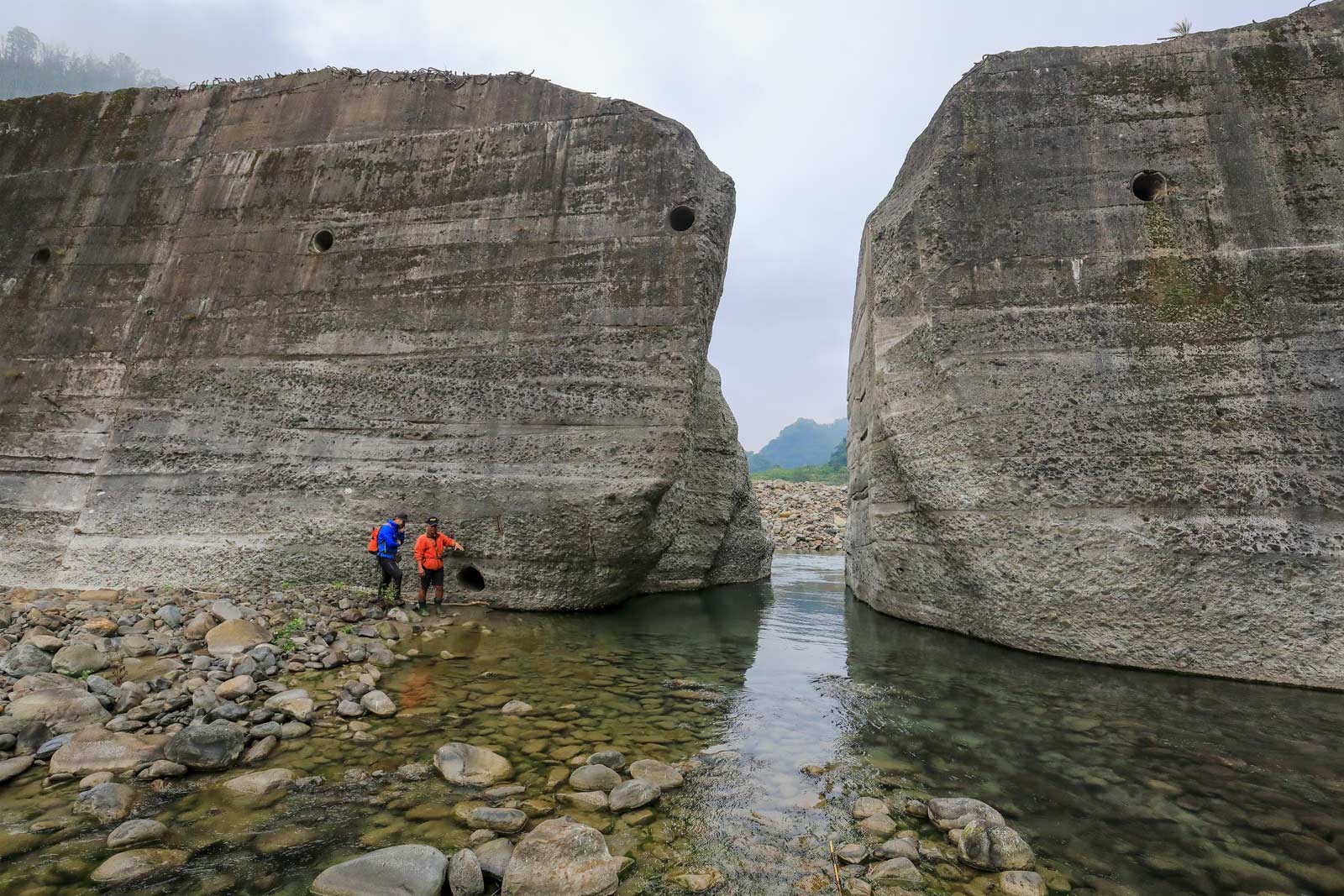 Mo'o Yasiyungu (Source: Chien-Ying Chiu)
Mo'o Yasiyungu (Source: Chien-Ying Chiu)
Mo'o Yasiyungu (安孝明), a member of Taiwan’s indigenous Tsou people, lives in Tapangu Village in Chiayi County. The forests upstream of Tsengwen Dam used to be his hunting ground. It is also the site of where one of the most catastrophic mudslides ever took place in Taiwan caused by Typhoon Morakot in 2009.
Mo'o Yasiyungu points at a faraway valley. “That used to be a whole mountain. The typhoon knocked it all down.”
The mudslide diminished the capacity of Tsengwen Reservoir by one-eighth. “That is enough water to tide the residents of Tainan through three dry years,” says Chou.
Chou’s concern is that, as the capacity of Taiwan’s reservoirs decreases, their ability to supply water during the dry seasons will also be lessened. If there is a serious drought, the southern regions of Taiwan will be hit the hardest.
Challenge #2: Can local governments work together to allocate water resources in southern Taiwan?
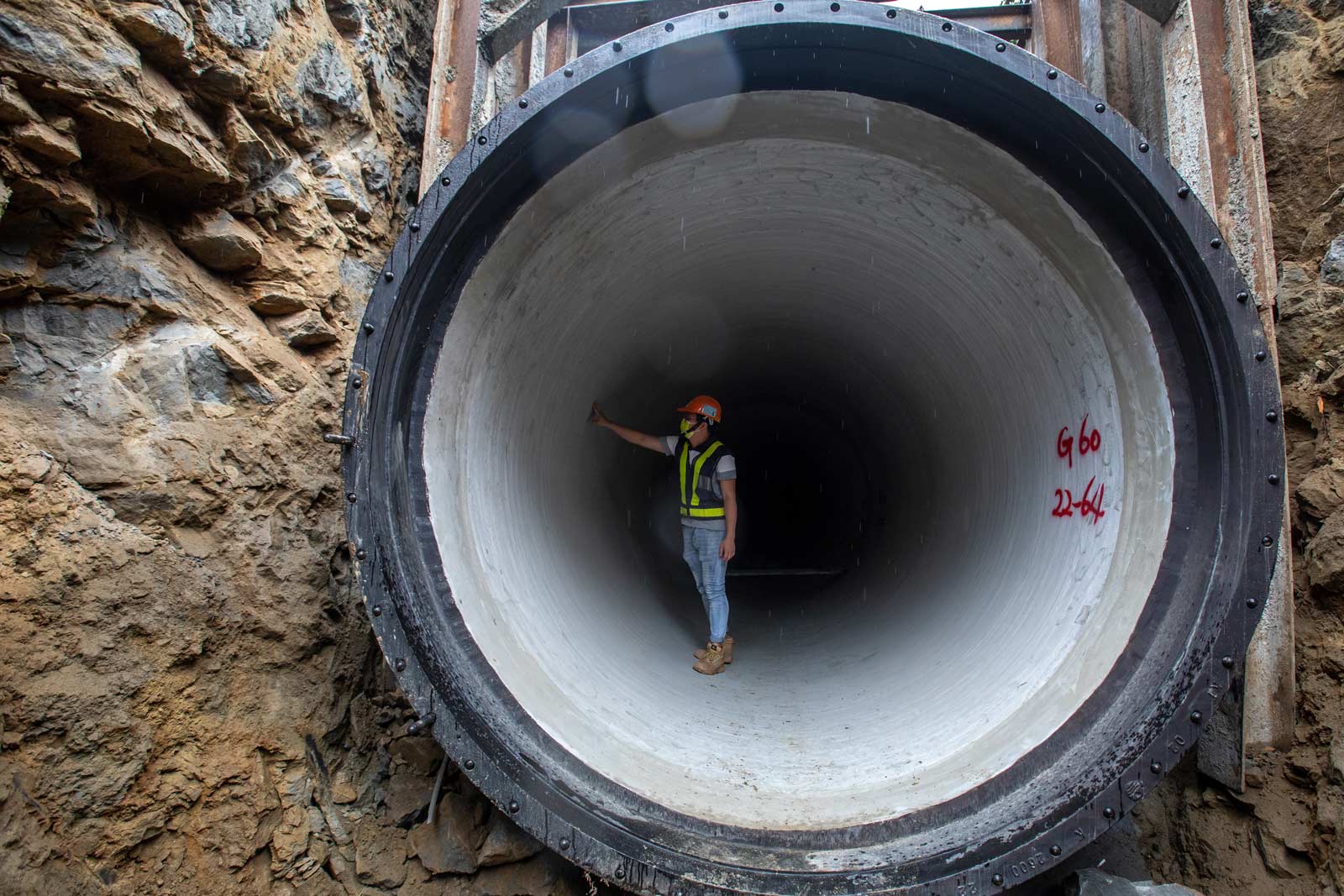 (Source: Chien-Ying Chiu)
(Source: Chien-Ying Chiu)
As a response to new precipitation patterns and the wave of fresh investments that are coming in, large-scale hydraulic engineering infrastructure development has already begun in southern Taiwan.
The goal is to build an interconnected network of water supply in the area. In rainy seasons, use of river water should be prioritized. Water in the reservoirs is saved for drier days. The water channels between Tainan and Kaohsiung must be linked so that the two southern cities can support each other.
Along the road to Tsengwen Dam, enormous pipes taller than humans are buried every few hundred meters. When the work is complete, Tsengwen Reservoir and Nanhua Reservoir, which is twenty kilometers away, will be connected. Water from Zengwen Reservoir will be shared with Nanhua Reservoir.
In the past, before the two reservoirs were linked, water might be manually released from Tsengwen Reservoir, even though Nanhua Reservoir was not full. Needless to say, this constituted unnecessary waste.
“Nanhua Reservoir holds water that could save Kaohsiung,” says Chou. The reason is that Nanhua Reservoir was designed to serve more than the people of Tainan. During dry seasons, water could also be diverted to Kaohsiung.
In case of a severe drought, however, both Kaohsiung and Tainan will need water. What then?
Tsai Chang-Jhan (蔡長展), Director of Kaohsiung's Water Resources Bureau, reveals that Kaohsiung funneled 140 million metric tons of water to Nanhua Reservoir last year. He believed that Tainan and Kaohsiung must share water resources and prosper together.
But competition for water between cities is already happening.
Last May, Kaohsiung Mayor Chen Chi-mai (陳其邁) led a team of workers to the border between Kaohsiung and Pingtung during the height of the dry season. He directed excavators to dig a hole in the levee of the Zhuokou River so that the water would flow toward Kaohsiung.
"This has never happened before," says an outraged Hsiang-neng Chang (張享能), chief of Xinfeng Village in Pingtung's Gaoshu Township. He hurried to the site just as the work was beginning.
Zhuokou River is upstream of the major rivers of Kaohsiung and Pingtung. Its water is used by Gaoshu Township's agricultural sector as well as the residents of Kaohsiung.
Tsai says that the situation constituted a water shortage. According to the rules, residential use took precedence over agricultural use. That was why power shovels were sent to redirect part of the flow into Kaohsiung.
But Chang says the residents of Gaoshu Township mostly cultivate rice and taro; these crops will not grow without enough water. Last year, during a drought, farmers in the village even got into fistfights over water. They could not believe the Kaohsiung City would resort to such underhanded tactics. The villagers threw rocks to vent their rage at the machines.
Unfortunately, such conflicts are expected to become more frequent.
Challenge #3: The fight over water between farmers and industrial sectors
As industries move into southern Taiwan, the shrinkage of the agricultural sector is only beginning.
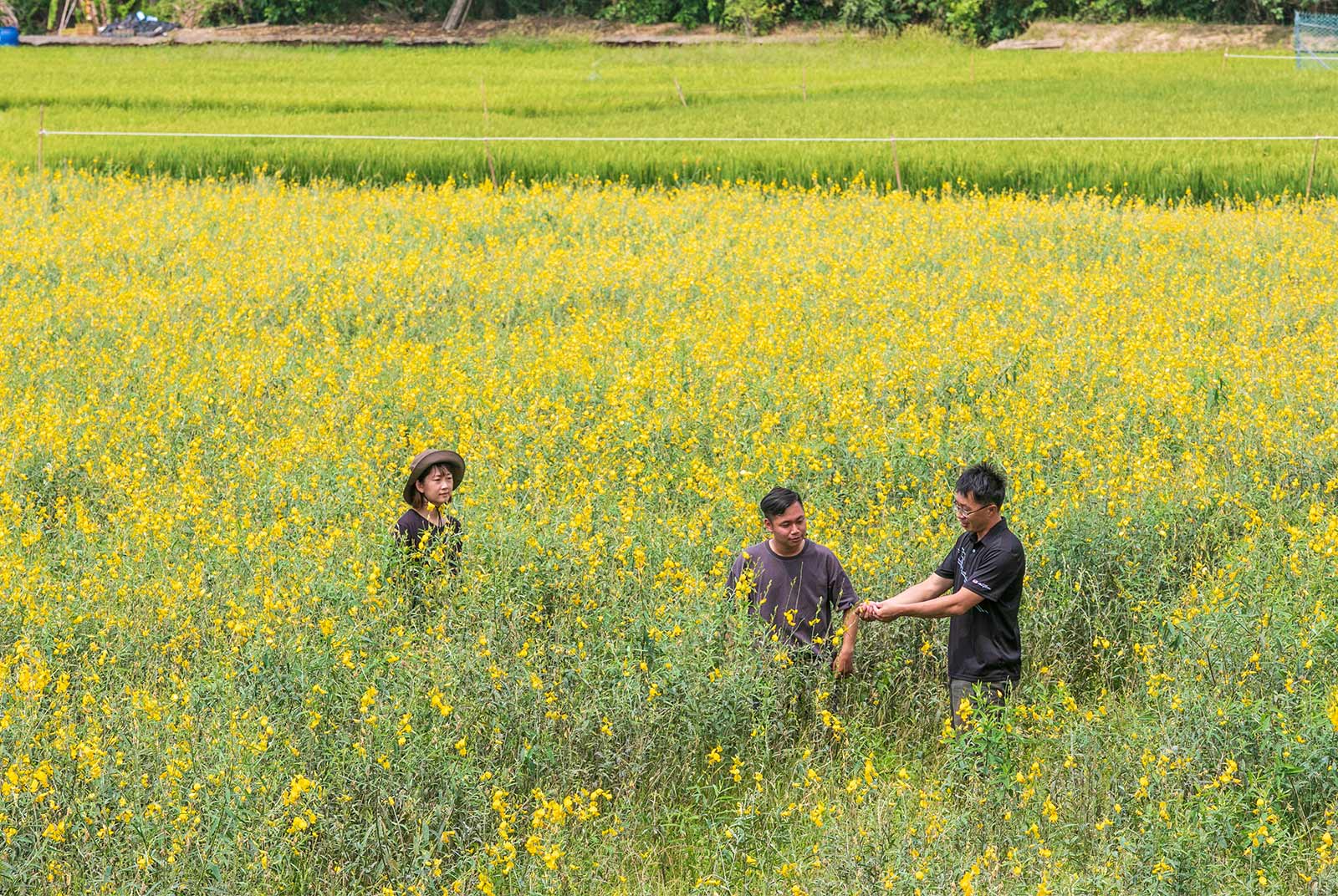 Yu-chi Hu (Source: Chien-Ying Chiu)
Yu-chi Hu (Source: Chien-Ying Chiu)
Yu-chi Hu (胡育旗), who operates a rice seed production plant in Tainan, was counting on young farmers returning to their homes and reviving the local economy. But for the last couple of years, the government has promoted an alternate husbandry program that encourages farmers to plant crops other than rice.
Beginning last year, Taiwan's Council of Agriculture promoted the "Rice Three Out of Four" (水稻四選三) initiative. It encourages farmers to plant something other than rice for one season out of the four rice seasons that span two years. The government offers cash rewards for farmers who adopt this practice and help cut down on water use.
"Already, 80% of rice farmers plant something besides rice in the first season. At this rate, soon it will be 90%," says Hu. He worries that his seed business will be affected.
Is there a way to solve the problem of the industrial and the agricultural sectors fighting each other for water? Han Rong-hwa (韓榮華), director of the Tainan City Government’s Water Resources Bureau, says that industries are encouraged to use a greater quantity of recycled water.
 Yong Kang Water Reclamation Plant (Source: Chien-Ying Chiu)
Yong Kang Water Reclamation Plant (Source: Chien-Ying Chiu)
The Yong Kang Water Reclamation Plant (永康再生水廠) is located ten kilometers from the Southern Taiwan Science Park. Starting this July, it is expected to supply 8,000 metric tons of reclaimed water every day for the plants of TSMC, UMC, and InnoLux in the Science Park. The capacity will be increased to 15,500 metric tons in the future.
Inside the facility, the two-story tall filter purifies the wastewater from Tainan's toilets and washing machines. The sedimentation, filtering, and disinfection process produces high-quality reclaimed water.
"This facility produces water for the semiconductor manufacturers, which requires water of the highest quality," says Chih-hao Kuo (郭志豪), Manager at Forest Water Environmental Engineering Co. Reusing water will help to conserve the precious resource.
Challenge #4: Who will pay for toilet water that's twice as expensive?
Six water reclamation centers are planned for Tainan and Kaohsiung. Together, they will be able to provide more than 210,000 metric tons of water.
Although water reclamation has a lauded history in Singapore and Israel, before the drought last year, Taiwan was slow on the uptake.
"Eight were supposed to have been completed by 2020, and eleven by 2026. But so far, we only have three. Before the great drought last year, only one plant had been completed in Kaohsiung’s Fongshan District," says Pi-Ru Tsai (蔡壁如), a legislator affiliated with Taiwan People's Party.
Because water in Taiwan is so cheap, there is no economic incentive to adopt new technology. Even the biggest water users only need to pay NT$12 for every unit (1,000 liters) of water. The same quantity of recycled water is nearly double the price, at NT$20 per unit.
Therefore, every reclamation plant must be built with the explicit understanding that there is enough demand to justify the expenditure. Local governments must seek out big companies that are willing to buy a lot of reclaimed water. More often than not, this is a wild goose chase.
"The biggest caveat is that you need to lock down buyers for reclaimed water," says Tsai. However, now that water shortage is a real concern, the industrial sector is actively seeking out providers of recycled water.
In 2016, Chimei took the initiative and introduced water reclamation technology into their manufacturing process. Two years ago, they built their own water reclamation plant. They recycle waste water from inside their own factories for reuse.
Chimei Vice President Denis Chen says that the value of reclaimed water cannot be measured in dollars. To Chimei, it is a question of what is sustainable for the environment. In addition, as droughts become more frequent, the impact on operations can be measured in months. These are all reasons why Chimei decided to build their own water reclamation facilities.
Last year, as water shortage affected the whole of Taiwan, the availability of recycled water helped Chimei negotiate with foreign customers.
"Our clients asked if the droughts would affect their orders. All we had to say was that a quarter of the water we use is reclaimed water. That's more than the quota mandated by the government. Our clients were reassured to hear this," says Chen.
In addition, Chimei signed a contract with the Tainan City Government to use reclaimed water from the Rende Water Reclamation Plant (仁德再生水廠). The target is to have reclaimed water make up 80% of the entire water supply by 2024.
The drought of a century has exposed the bottleneck in southern Taiwan's water supply. In the future, water resource allocation plans, as well as long-term water usage plans, will decide if industries bloom or wither.
Have you read?
- How a Taiwanese company is trying to save the ocean
- How can Cheng Kung University reach carbon neutrality in 20 years?
- Turning used cardboard lunch boxes into fuel? Paper mills hold the secret weapon
Edited by TC Lin
Uploaded by Ian Huang






